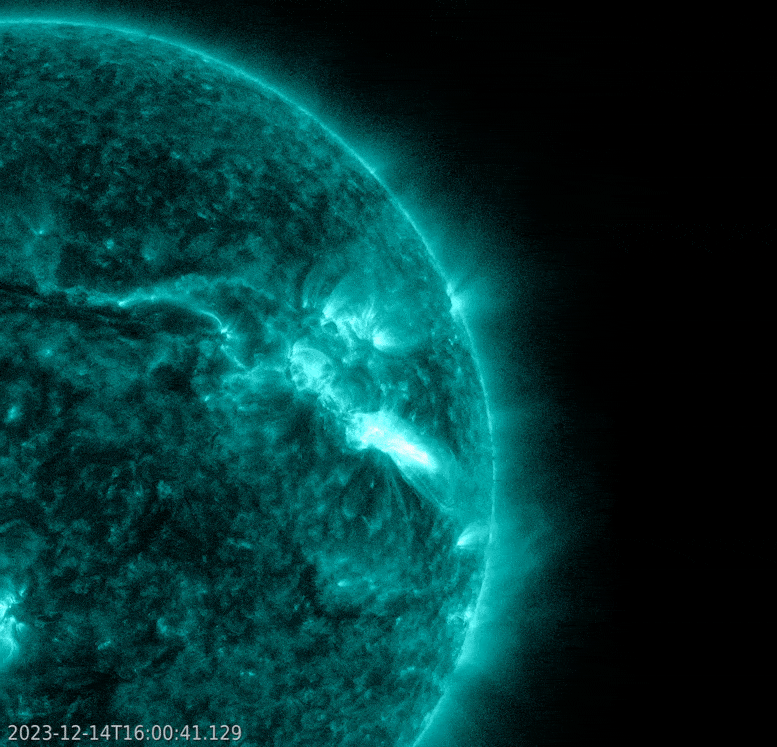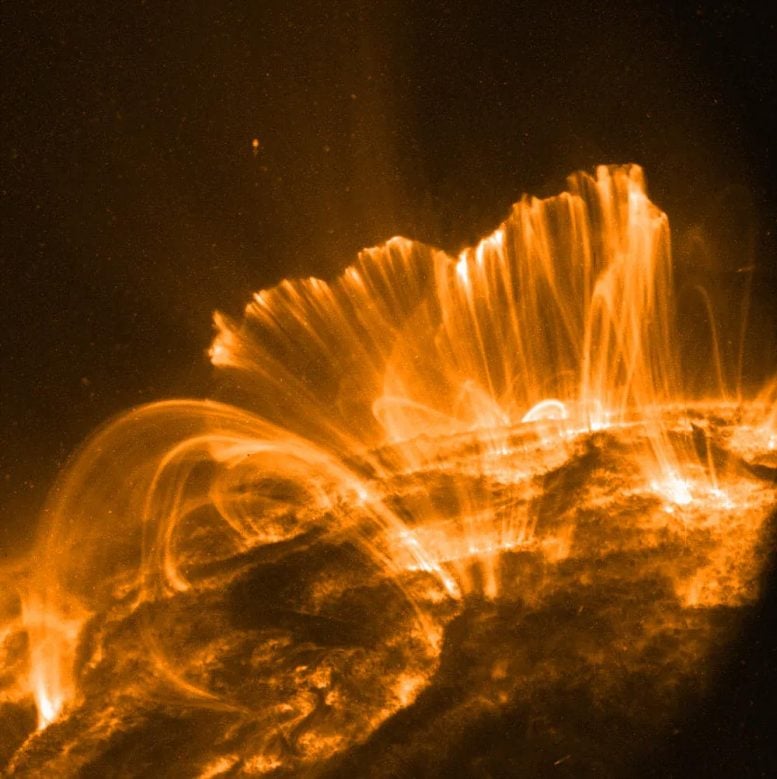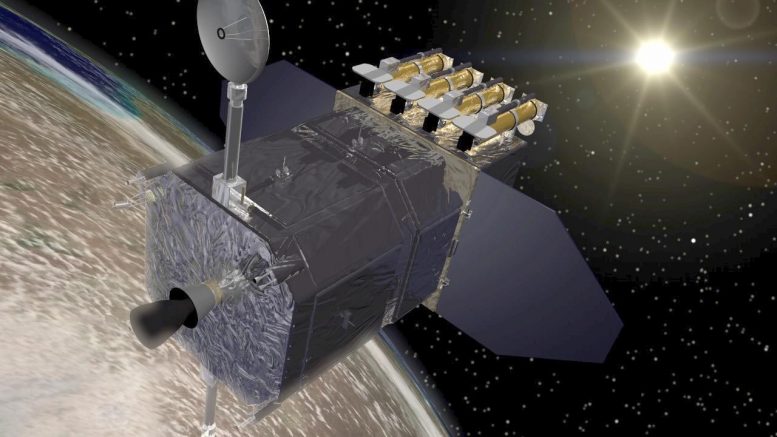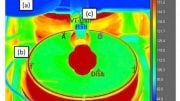
NASA’s Solar Dynamics Observatory captured this image of a solar flare – as seen in the bright flash in the upper right – on December 14. The image shows a subset of extreme ultraviolet light that highlights the extremely hot material in flares, and which is colorized in teal. Credit: NASA/SDO
NASA observed a significant X2.8 solar flare on December 14, 2023, with potential impacts on Earth’s technological systems, monitored by NOAA’s Space Weather Prediction Center.
The Sun emitted a strong solar flare, peaking at 12:02 p.m. EST, on December 14, 2023. NASA’s Solar Dynamics Observatory, which watches the Sun constantly, captured an image of the event.
Solar flares are powerful bursts of energy. Flares and solar eruptions can impact radio communications, electric power grids, navigation signals, and pose risks to spacecraft and astronauts.
This flare is classified as an X2.8 flare. X-class denotes the most intense flares, while the number provides more information about its strength.

Solar flares – like this one captured by a NASA satellite orbiting the Sun – eject huge amounts of radiation. Credit: NASA
Solar Flares
Solar flares are intense bursts of radiation emanating from the release of magnetic energy associated with sunspots. They are among the solar system’s most powerful phenomena and can have significant effects on Earth’s space environment.
These flares are classified according to their strength. The classifications are as follows:
- X-Class Flares: These are the most intense flares. They can cause planet-wide radio blackouts and long-lasting radiation storms, affecting satellites and astronauts. X-class flares are further categorized by a number, with a higher number indicating a more intense flare. For example, an X2 flare is twice as intense as an X1 flare, and four times more intense than an X0.5 flare.
- M-Class Flares: These are medium-strength flares. They can cause brief radio blackouts in the polar regions and minor radiation storms. While not as powerful as X-class flares, they can still have noticeable effects on Earth’s space weather.
- C-Class Flares: These are small flares with few noticeable consequences on Earth. They are more common than M- and X-class flares but are usually too weak to significantly affect space weather.
- B-Class and A-Class Flares: These are even smaller flares, often undetectable without specialized solar observation instruments. They have minimal, if any, effect on Earth.
The classification is based on the peak flux (number of photons) in watts per square meter, measured at the Earth’s orbit by the GOES spacecraft. This system allows for a quick and easy way to communicate the intensity of solar flares and their potential impact on space weather and Earth.

Artist’s concept of the Solar Dynamics Observatory (SDO). Credit: NASA/Goddard Space Flight Center Conceptual Image Lab
NASA’s Solar Dynamics Observatory
NASA’s Solar Dynamics Observatory (SDO) is a pivotal mission in the study of the Sun, playing a crucial role in our understanding of our nearest star. Launched on February 11, 2010, the SDO is specifically designed to observe and understand the solar activity that influences Earth and space weather.
The primary goals of the SDO are to provide a deeper understanding of the Sun’s influence on Earth and near-Earth space by studying the solar atmosphere on small scales of space and time, and in many wavelengths simultaneously. This is crucial for understanding the Sun’s impact on our planet, particularly its magnetic field and the space environment.
SDO is equipped with a suite of sophisticated instruments. The Atmospheric Imaging Assembly (AIA) captures high-resolution images of the solar atmosphere, the Helioseismic and Magnetic Imager (HMI) studies the solar magnetic field and the dynamic motions inside the Sun, and the Extreme Ultraviolet Variability Experiment (EVE) measures the Sun’s ultraviolet output.
One of the most significant contributions of SDO is the continuous, detailed observation of the Sun in multiple wavelengths. These observations provide a comprehensive view of solar activities like flares, coronal mass ejections, and solar magnetic field changes. The data from SDO has been instrumental in advancing our understanding of the Sun’s complex and dynamic magnetic field, its energy output, and how these factors interact to drive space weather.
In summary, NASA’s Solar Dynamics Observatory is a key asset in solar science, providing invaluable data that helps scientists better understand the Sun’s behavior and its effects on space weather and Earth.









Be the first to comment on "Sun Unleashes Mighty X2.8 Fury: NASA Captures Stellar Spectacle"